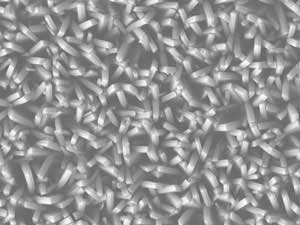| Posted: Jan 16, 2018 |
Nanomedicine taking a stab at microbes
(Nanowerk News) A powerful solution to the global spread of antimicrobial resistance could soon become available, thanks to A*STAR researchers, who have come up with a physical and green alternative to biochemically active antibacterial agents.
|
|
Typically transmitted by contact with contaminated surfaces, bacterial infections pose serious health threats in medical settings. Small molecular antibacterial agents, which are commonly used in antiseptics, disinfectants, and preservatives, and other consumer care products, can prevent cross-infection by annihilating bacteria on frequently touched surfaces. However, their overuse contributes to antimicrobial resistance. These toxic and persistent substances can also harm the environment by disrupting the ecological balance of soils and endangering aquatic life.
|
 |
| A*STAR researchers have developed positively charged nano-dagger arrays that effectively kill microbes, such as Escherichia coli and Staphylococcus aureus. (Image: A*STAR Institute of Bioengineering and Nanotechnology)
|
|
In response to this, Yugen Zhang and Yuan Yuan, from the Institute of Bioengineering and Nanotechnology have developed nanostructured surfaces that destroy bacteria through physical, rather than biochemical interactions (Nanomedicine: Nanotechnology, Biology, and Medicine, "Enhanced biomimic bactericidal surfaces by coating with positively-charged ZIF nano-dagger arrays"). These surfaces mimic the antimicrobial patterns formed by ultra-small pillars on cicada wings. “In addition to being clean and safe, this technology does not require externally applied chemicals,” says Zhang.
|
|
The researchers added a zinc-based solution to various surfaces, including rubber, glass, wood, and metal foil, then immersed the surfaces in an aqueous solution containing amine-rich 2-methylimidazole to form a so-called zeolitic imidazolate framework coating. The coating consisted of an array of tiny, positively charged dagger-like crystals that grew perpendicularly to the substrates.
|
|
“We used inexpensive materials and a simple method to create this nano-dagger structure on different types of surfaces,” says Zhang noting that his team had to try numerous formulas before finding the right growth conditions.
|
|
Regardless of the coated substrate, the nano-dagger arrays effectively killed the antibiotic-resistant bacteria Escherichia coli and Staphylococcus aureus as well as the fungus Candida albicans, demonstrating their broad applicability. They also retained their antibacterial activity when exposed four consecutive times to E. coli over two months, proving their durability.
|
|
According to Zhang, the positive charges positioned on the nano-daggers first attract bacterial cells that bear negatively charged membranes, making them stick to the coated surface. Next, the sharp nano-dagger tips rip the cell membranes open through electrostatic and gravitational forces.
|
|
“We are really excited about the excellent bacterial killing property of this technology and believe that it will have wide-ranging applications in real life,” says Zhang. His team is currently working on developing nano-dagger surface prototypes and other antimicrobial nano-patterned surfaces using different materials.
|

